The famous Geist Building stood at 2 Kálvin Square from 1863. Although the building was known and became popular because of the café on the ground floor, the owner of the building is also of note. Gáspár Geist, who had trained to be a cooper in his hometown of Gyula, ended up as a chandler after learning the secrets of making stearin candles in Vienna.
He became a citizen of Pest in 1844, by which time he was already earning his living as a candle maker. His uncle, Adam, a pig breeder (among other trades), commissioned him to sell his animals in Pest. The lucrative pig business made the chandler a rich citizen, and his marriage proved to be especially fortunate in terms of his financial situation. He married the daughter of the butcher Mihály Gartner and in 1862, when his father-in-law died, the two plots bordered by today's Kecskeméti Street, Magyar Street and Kálvin Square also became his property.
In 1863, Geist commissioned architect Antal Gottgeb to design a large residential building's floors and facade and asked Miklós Ybl to design the café and courtyard for the ground floor.
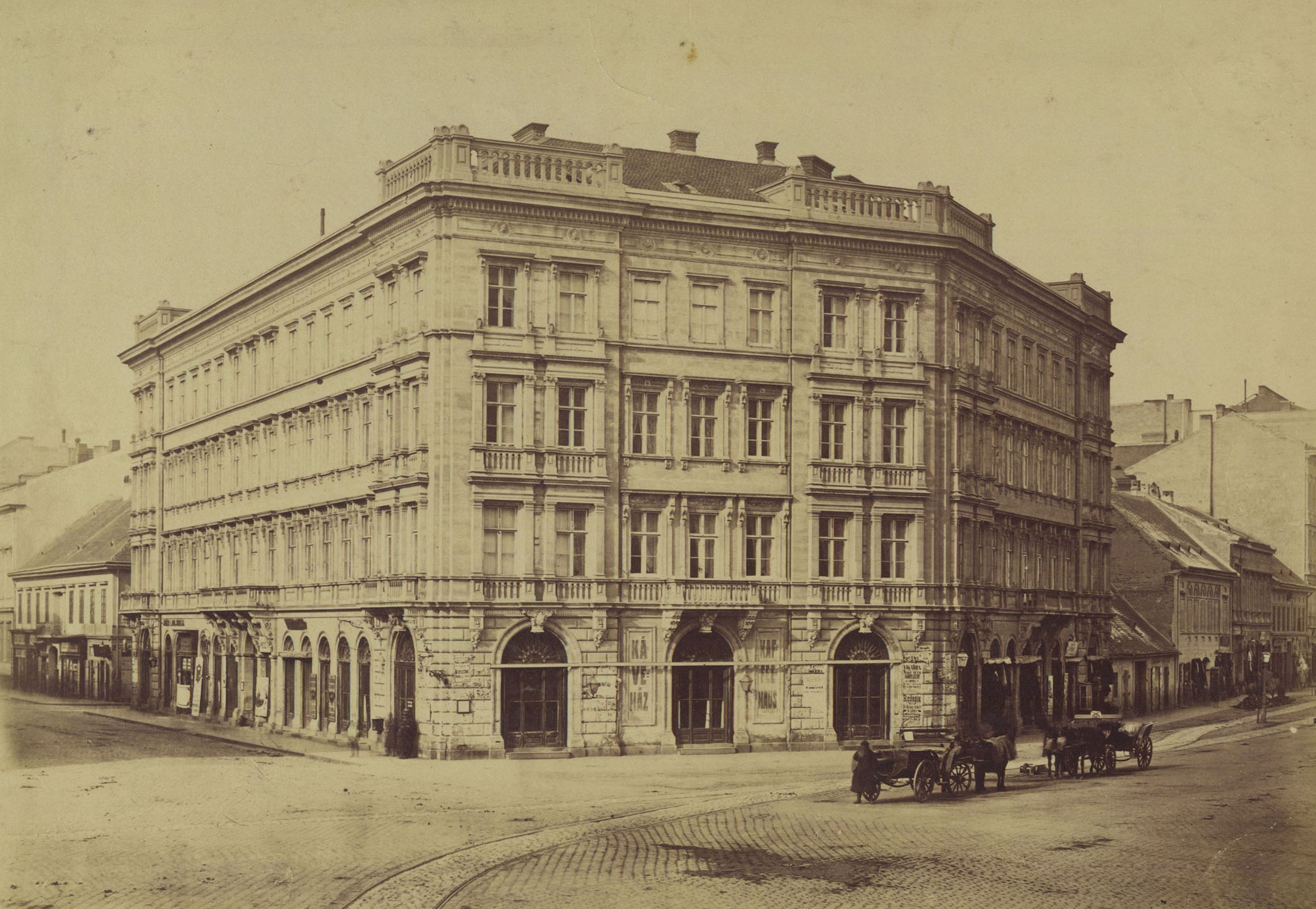
The Geist Building in 1879 (Source: Fortepan/No.: 82069)
The building had three main entrances: from Kecskeméti Street, residents could reach the flats, a restaurant operated on the Magyar Street front, and the entrance from Kálvin Square led to the mentioned café. The first famous coffee house owner to open shop here was Mihály Hüttner, who first appeared on the pages of contemporary newspapers in 1864 and offered his future guests a coffee pass. For a fee of 3 Forints, the citizens of Pest were able to reserve many cups of coffee before even entering the café.
The method, which could be likened to reservations, was no longer needed after he opened a new café in the Geiszt building (1871). By the time he was a popular figure and had changed his name from Hüttner to Bátor. He changed the café's name to Báthory, indicating that it was ready to serve the Hungarian aristocracy through its spelling. The café was extremely popular and frequented by public figures, politicians, and artists alike. The kitchen was outstanding; the so-called Báthory-toast was well-known throughout the city. Conversations were not disturbed by live music (several musical cafés on both sides of the river offered that kind of fun).
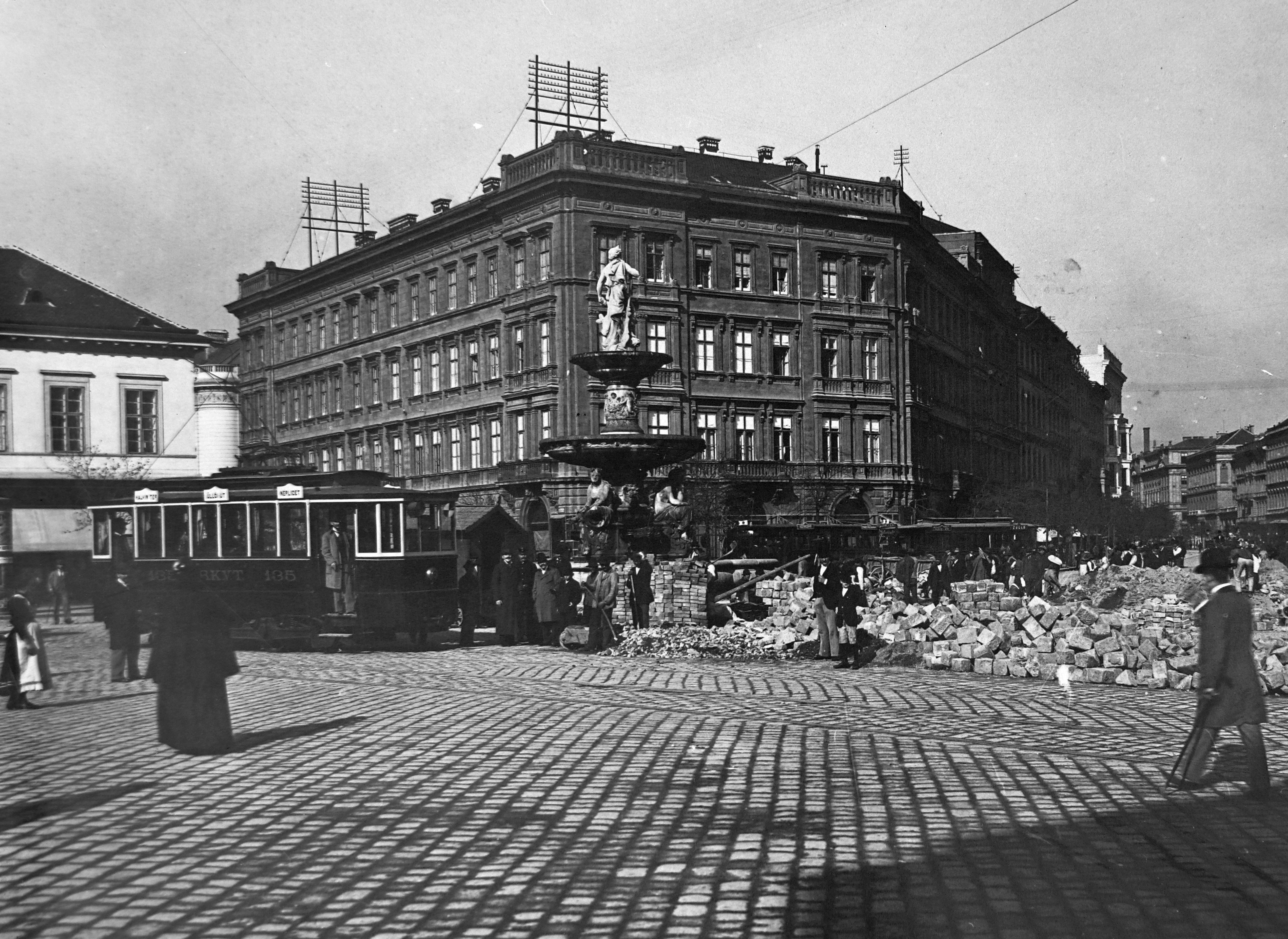
The Geist Building and Danubius Fountain around 1905 (Source: Fortepan/No.: 200395)
Mihály Bátori died in 1897 at the age of 73, and Ferenc Morvai became the new owner of the café. He was less successful and lucky than his predecessor. On several occasions, major card games turned into fights, warranting police action. A series of court cases signalled when someone bet a smaller fortune but refused to pay their debts. Mr Morvai was often forced to appear as a witness in court hearings.
He also banned the Bankszem Jankó satirical magazine from the café once because its editorial staff had acted against honour: a poem was published in the magazine which, according to some readers, offended the memory of Lajos Kossuth. Mr Morvai found it increasingly difficult to endure the ordeals. In 1905 he suffered a nervous breakdown and fell under constant medical care.
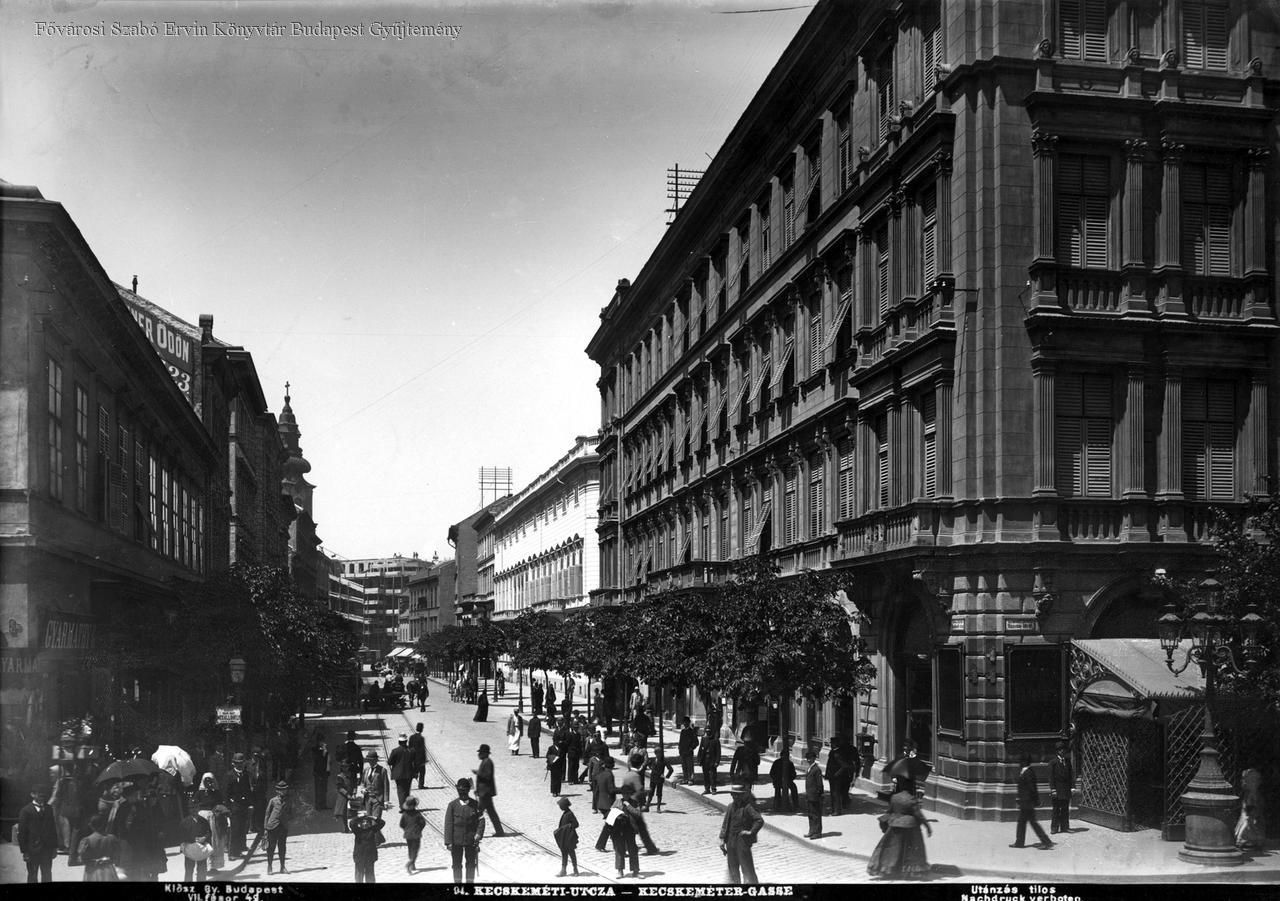
The Geist Building around 1895 (Source: FSZEK Budapest Collection)
Marcell Beyer took over the business a made "Báthory" successful again. His speciality was an alcoholic beverage called green wine, which was primarily consumed in large quantities by university students. He also had another true speciality: a strikingly beautiful daughter, who often helped her father during the day, exciting guests with her presence. From 1916 onwards, she could be found in any tabloid, as she became one of the greatest Hungarian actresses, under the stage name Bajor Gizi.
In 1911, the history of the Geist Building entered a new chapter. In 1909, the two-storey house under 1 Kálvin Square was demolished, and a temporary kiosk built on the square for the merchants who had had a shop in the old building. At the same time, the Reformed Church set about preparing a large-scale construction on the square's Ferencváros side. The buildings at 8 and 9 Kálvin Square were to be demolished to make space for a residential building and shop.
The shops which had once operated in the building also moved into the kiosk. It was at this time that a descendant of Gáspár Geist decided to move out of the building. Likely the noise from the popular café had become a nuisance. The idea of moving the Báthory to the kiosk until it found a new location was floated, but Beyer was unkeen to take this step.
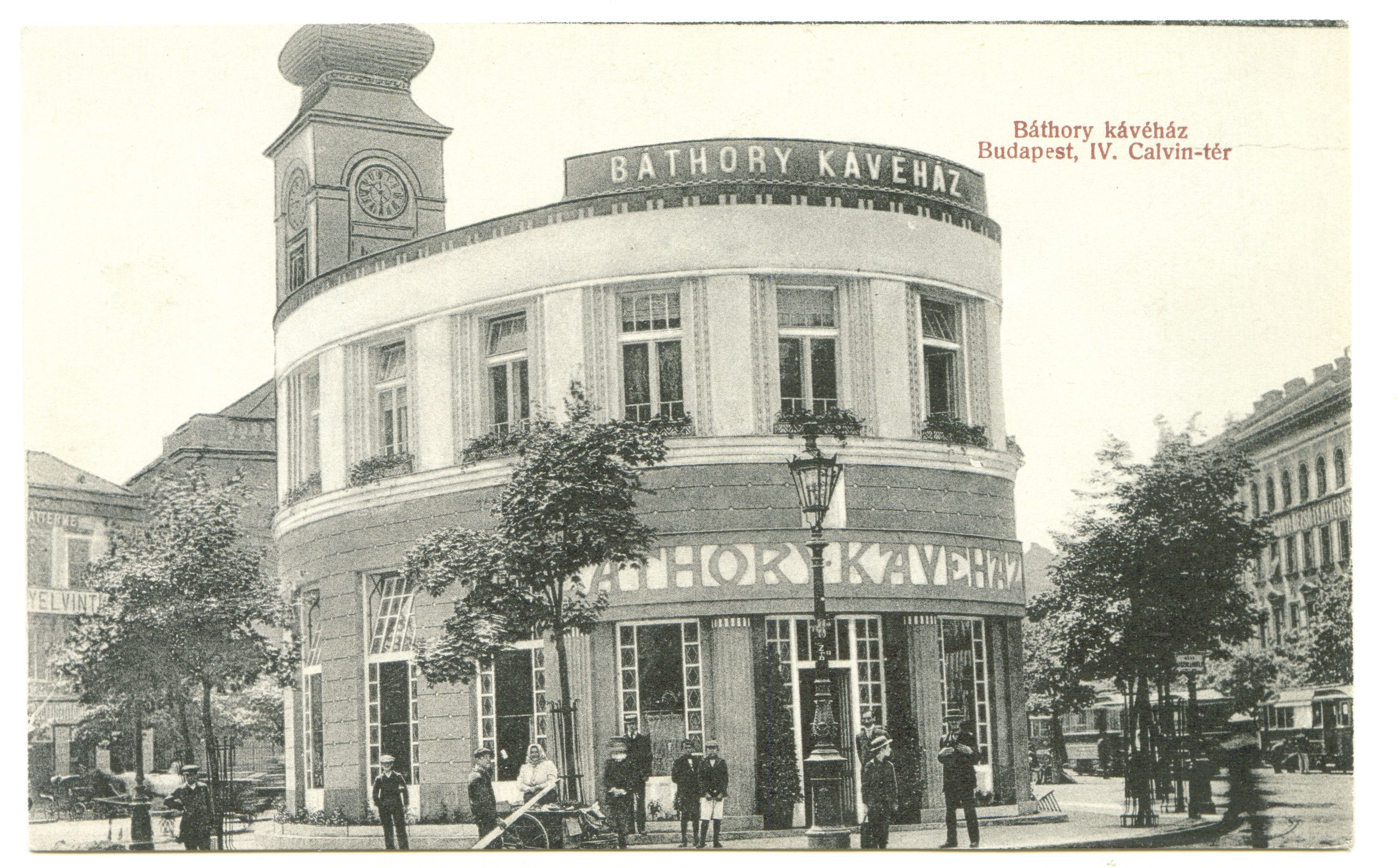
The kiosk on Kálvin Square (Source: Ferencváros Local History Collection)
However, Károly Sommer was more open to the plan, and for the next three years, the famous café also moved into the kiosk in the middle of the square. However, Sommer miscalculated somewhat, as the kiosk was demolished in 1914. It was judged to disrupt traffic flow and the cityscape. Moreover, the construction planned by the Reformed Church fell through. The building under 8 and 9 Kálvin Square, the former Two Lions Inn and the adjoining residential building (fortunately for posterity) stand to the present day.
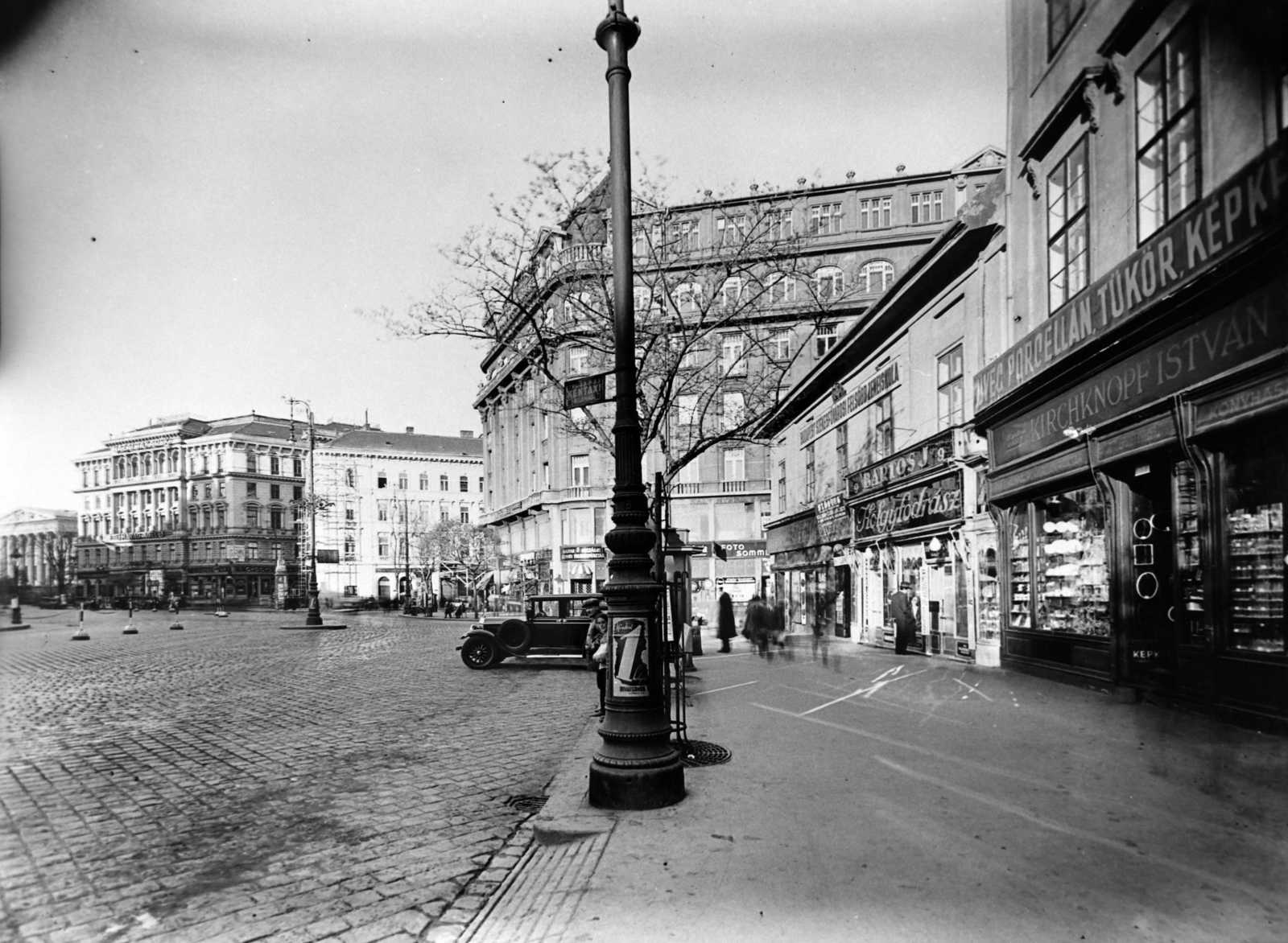
Kálvin Square in 1920 (Photo: Fortepan/No.: 200397)
The building was so badly damaged during World War II that it could not be repaired. An empty plot remained in its place, which was eventually converted into a park.
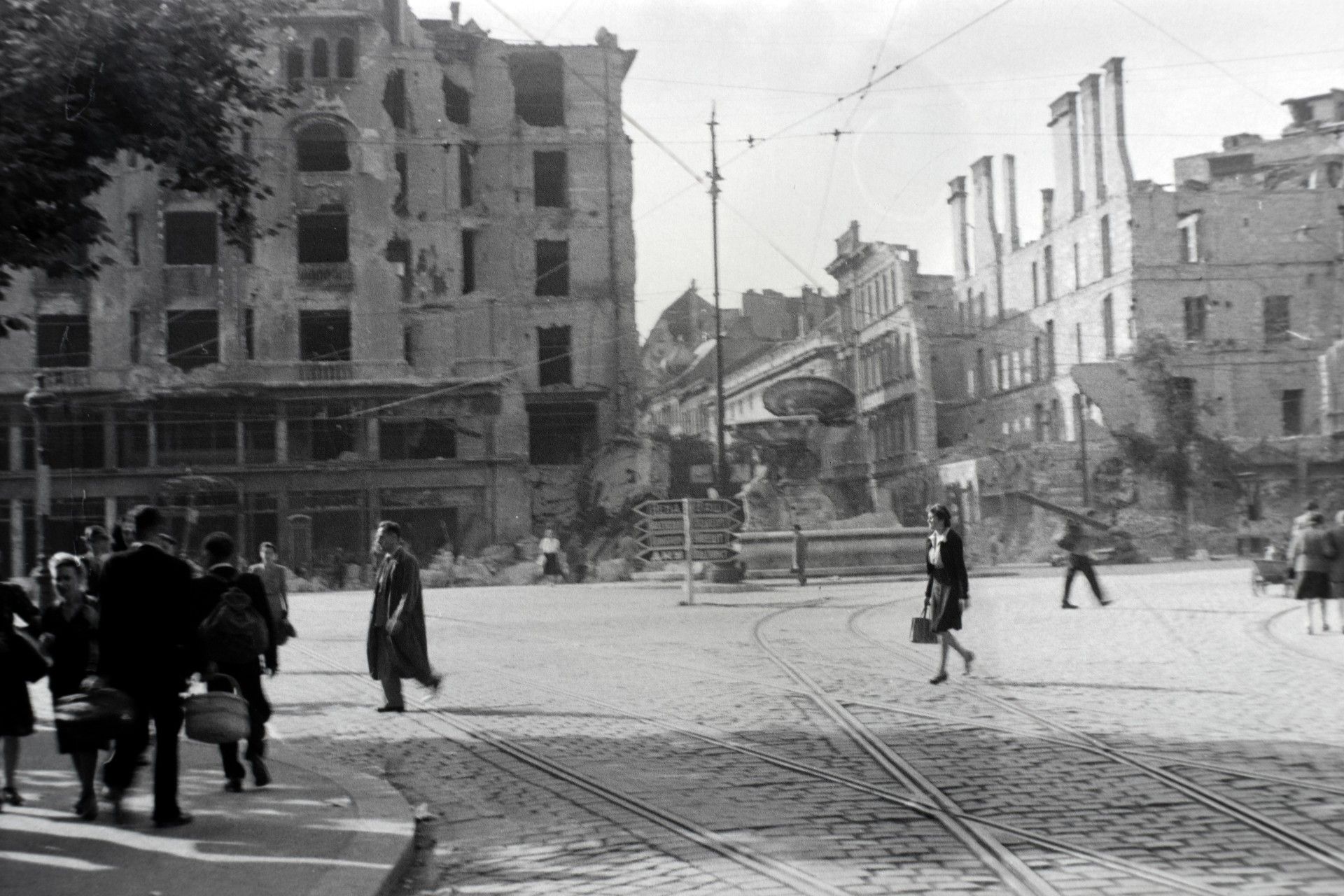
The damaged Geist Building and Pintér Building with the remains of the Danubius Fountain in the spring of 1945
(Photo: Fortepan/Image No.: 45557)
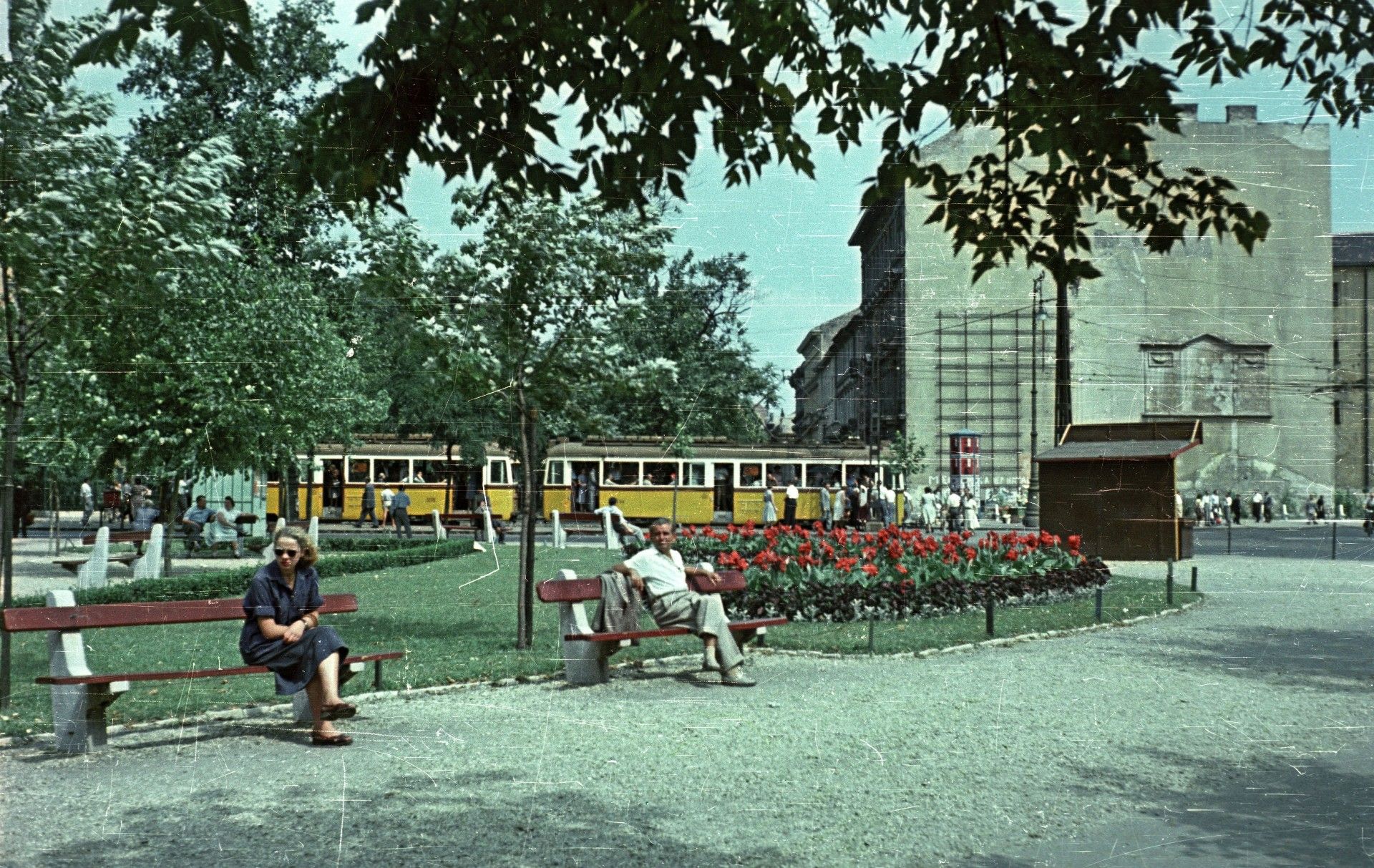
Public park on the site of the Geist Building in 1958 (Photo: Fortepan/No.: 51607)
The other building mentioned above is also worthy of a few lines. From 1863 to 1909, a classicist-style house stood at 1 Kálvin Square. It was owned by György Gyarmathy, a businessman who traded in chemicals and spirits. His son, Gyula Gyarmathy, imported exotic spices, coffee beans, cocoa and other, so-called colonial goods.
The house was bought from him by Gyula Pintér, who until then had lived in a house in the area bordered by Bástya Street, Kecskeméti Street and Képíró Street, only a corner away. The Gyarmathy House, it seems, did not live up to his ideals because, in 1909, he commissioned the architect Dezső Hültl to design a high-rise, modern building for the plot.
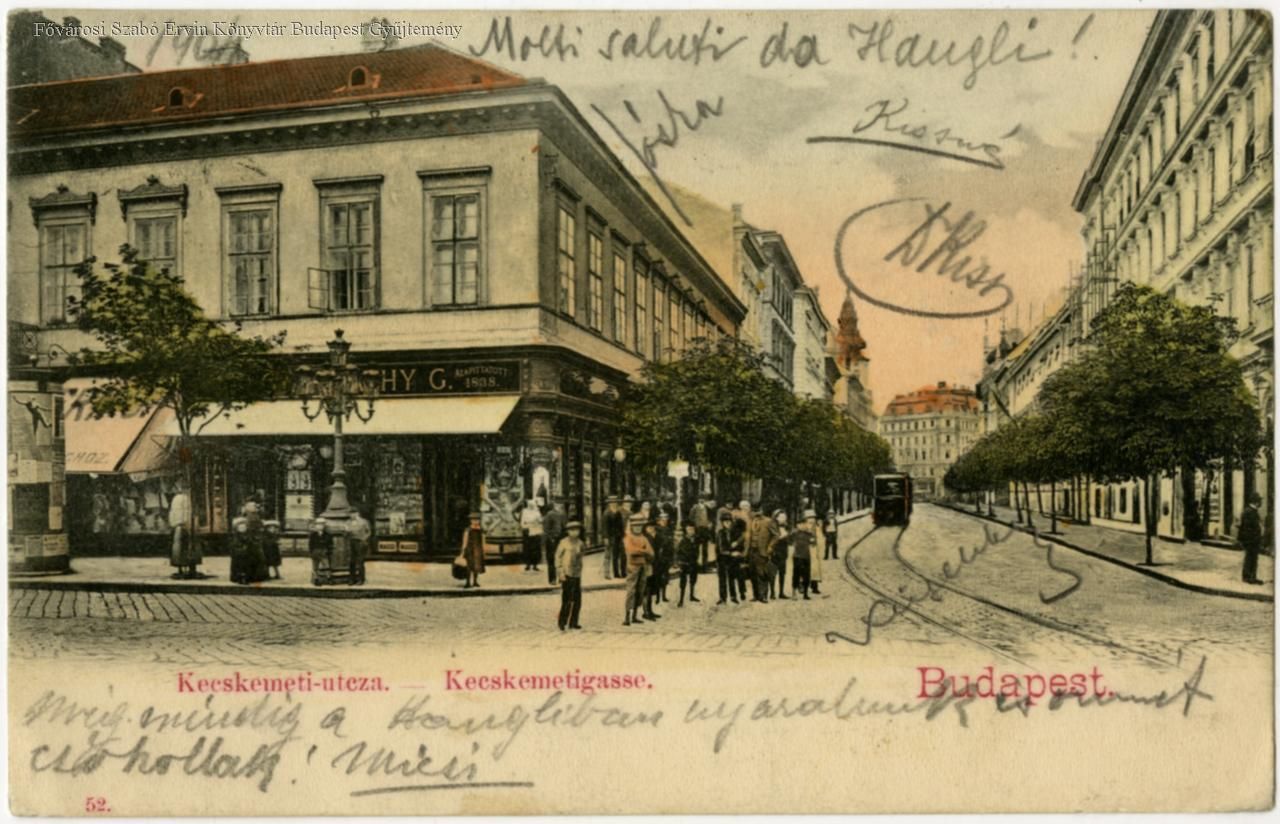
The Gyarmathy House on a turn-of-the-century postcard (Source: FSZEK Budapest Collection)
By 1910, the Pintér House was completed, and its owner, who held the title of Supplier to the Imperial and Royal Court, was pleased to move into his new residence. The structure was magnificent. The residential buildings showed the hallmarks of art deco and Art Nouveau and harmonised perfectly with Hültl's other palace on Kálvin Square, the Insurance Institute of Hungarian Farmers, which stood at the mouth of Üllői Road.
The clothing company of József Stern moved in the Pintér House. The businessman had been selling women's underwear and clothing on Kálvin Square since 1860. For almost forty years, the business had operated in the Gyarmathy House, so Henrik Stern, the head of the business at the time, did not have to worry about the move much. A Stern Store operated in the kiosk on the square until 1914.
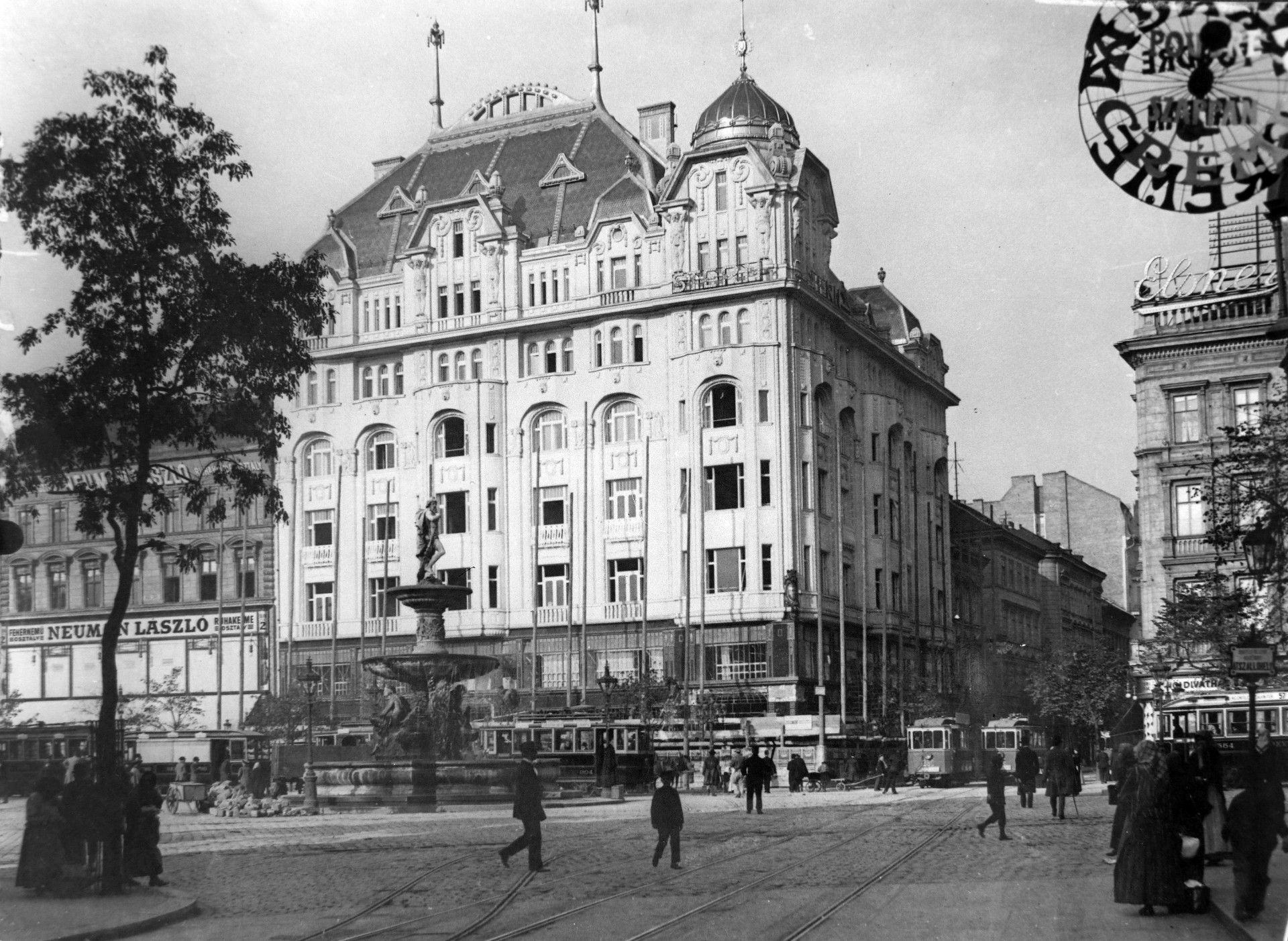
The Pintér Building, circa 1920, with the inscription Stern on the fifth floor level of the facade (Photo: Fortepan/No.: 200396)
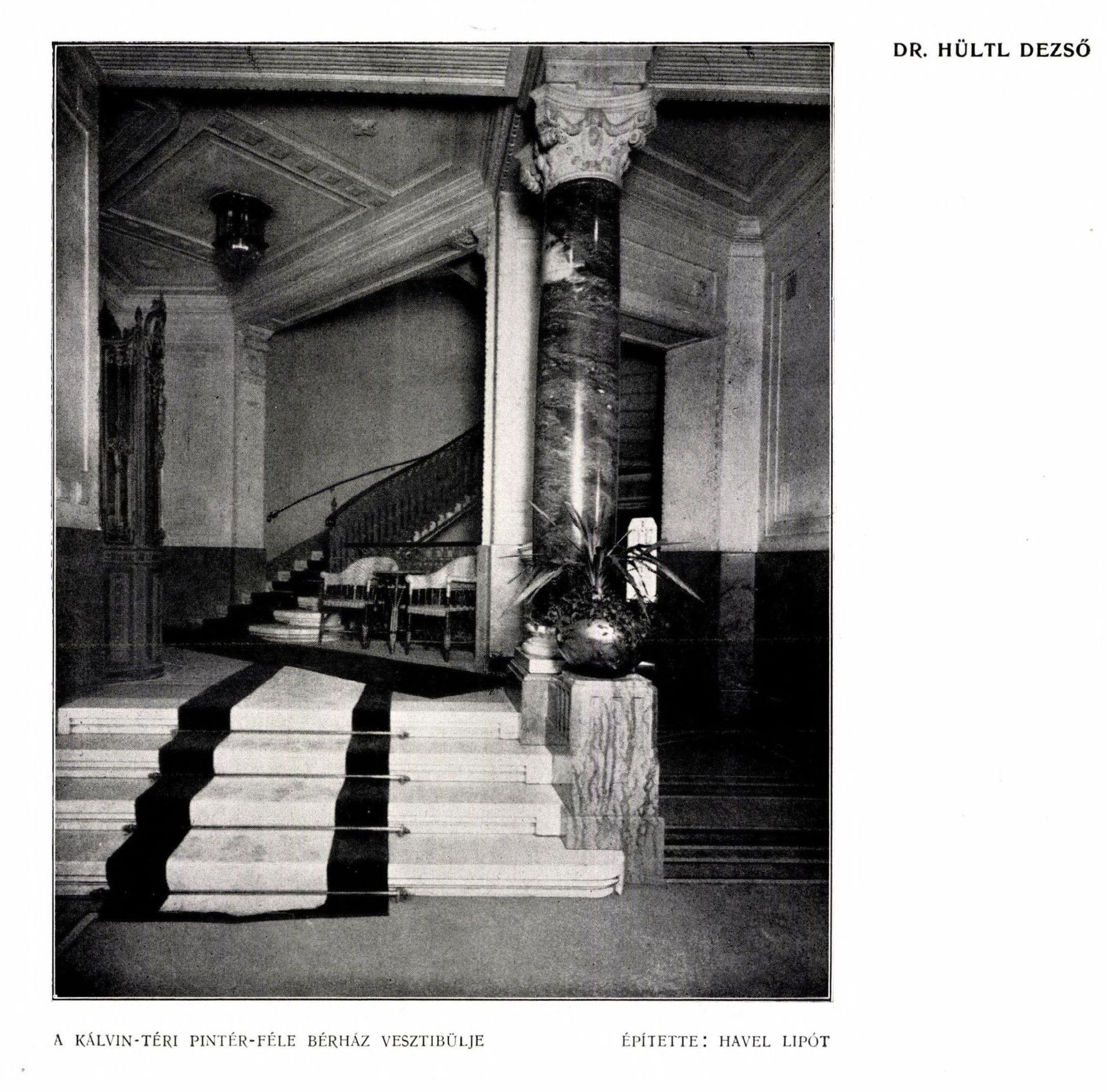
Photo from the 9th issue of the 1913 volume of Magyar Építőművészet.
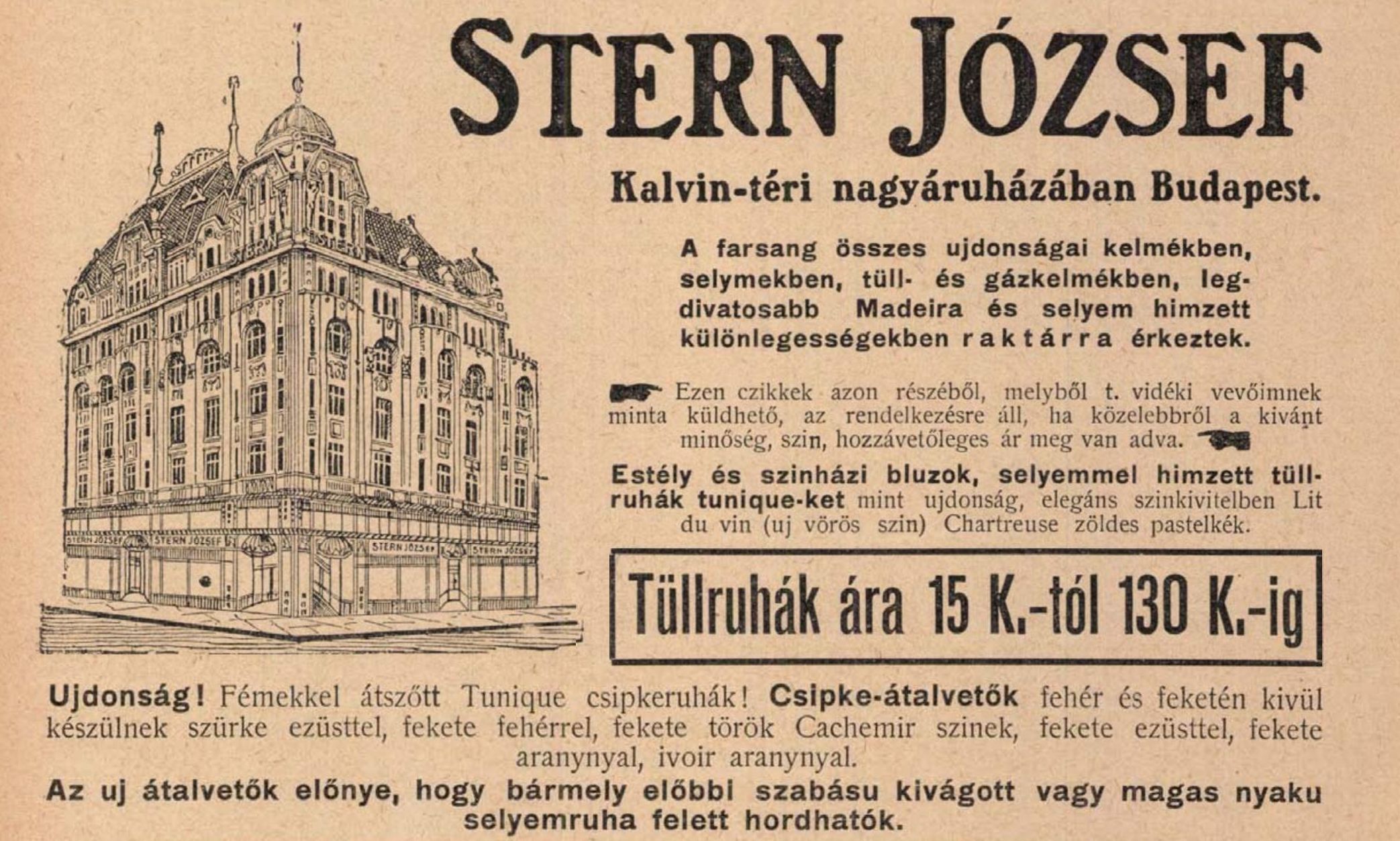
Advertisement of Stern József Rt. in the 12 January 1911 issue of Tolnai Világlapja
The company operated until 1929 when it was liquidated, and a certain László Havas continued to sell clothes in the Pintér House. In a happier timeline, the list of store owners and businesses would continue, but the destruction of World War II did not spare the beautiful building.
The house was destroyed in the desperate street fighting of January 1945. It was completely demolished in 1948 and remained undeveloped until 1988. That is not completely because sometimes small or large stalls appeared, and from the mid-1950s, an open-air café called Városkapu Eszpresszó moved in. It was perhaps best known as a performance venue for the artists of the Vidám Színpad.
Planning and the metro construction changed the layout of the two plots several times over the years. Finally, in 1988, the Pannonia Hotel and Catering Company began to build the hotel, which stands to the present day, with support from Austria and West Germany. As they say, the rest is history. The square has changed completely with new buildings in recent decades. The atmosphere of the early 1900s is forever a thing of the past. However, the memory of the Geist Building and Pintér Building should stay with us.
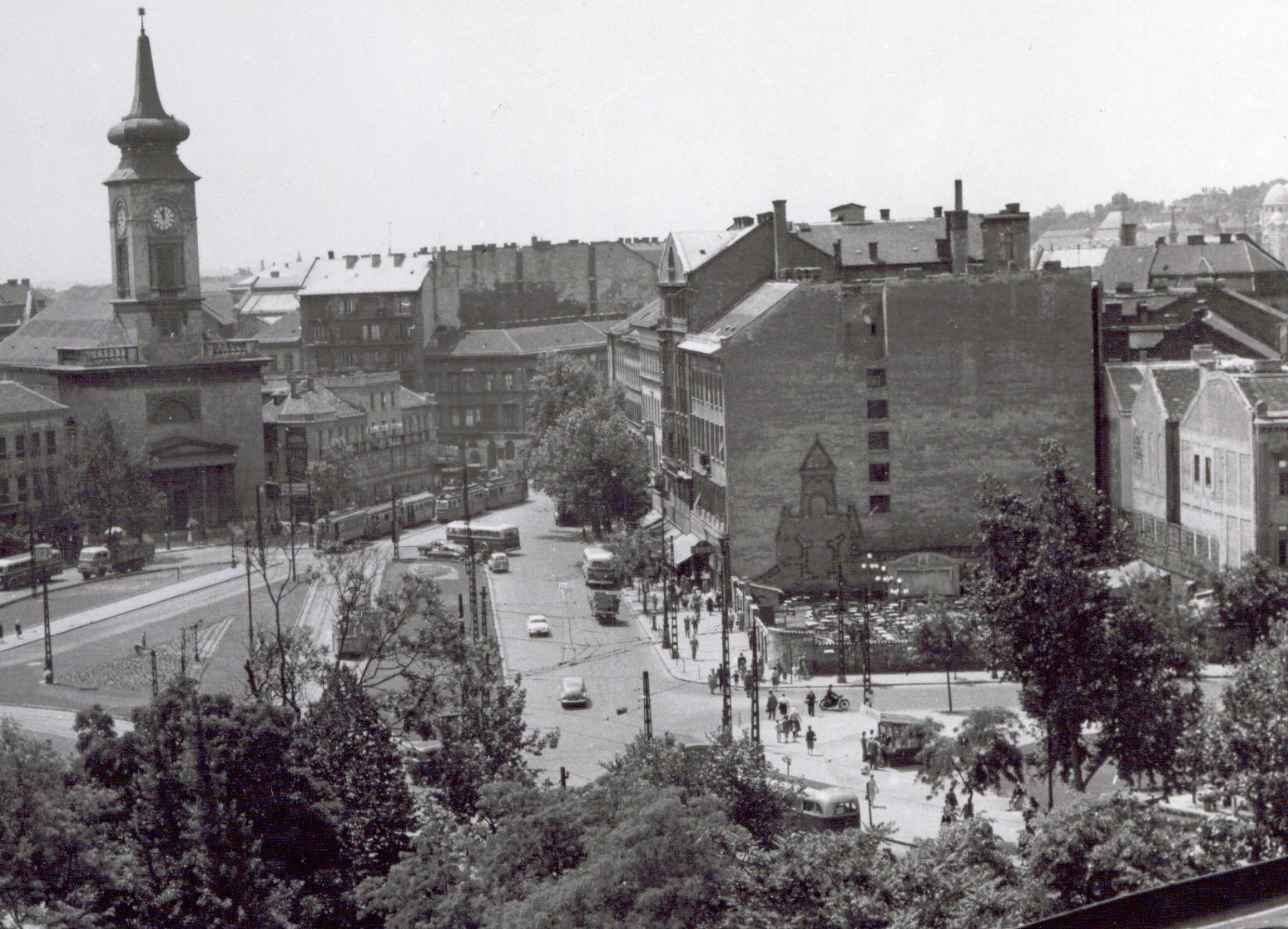
Kálvin Square, to the right the tables of the Váruskapu Eszpresszó on the site of the Pintér Building in 1970 (Source: Ferencváros Local History Collection)
Cover photo: The Pinter House around 1920 (Photo: Fortepan/No.: 200396)

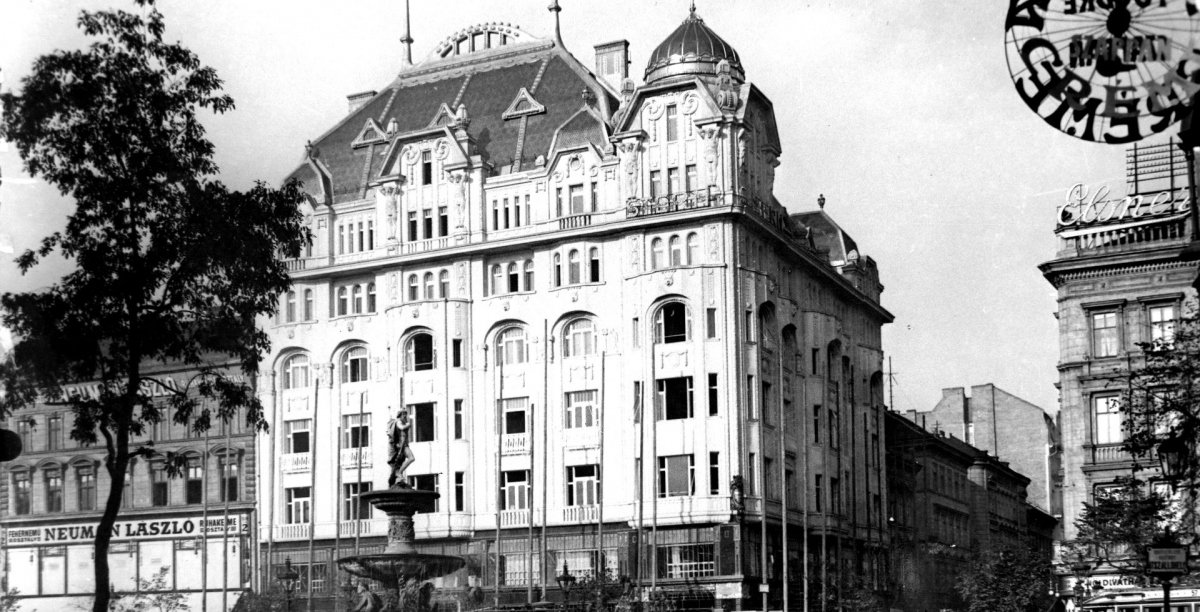







Hozzászólások
Log in or register to comment!
Login Registration